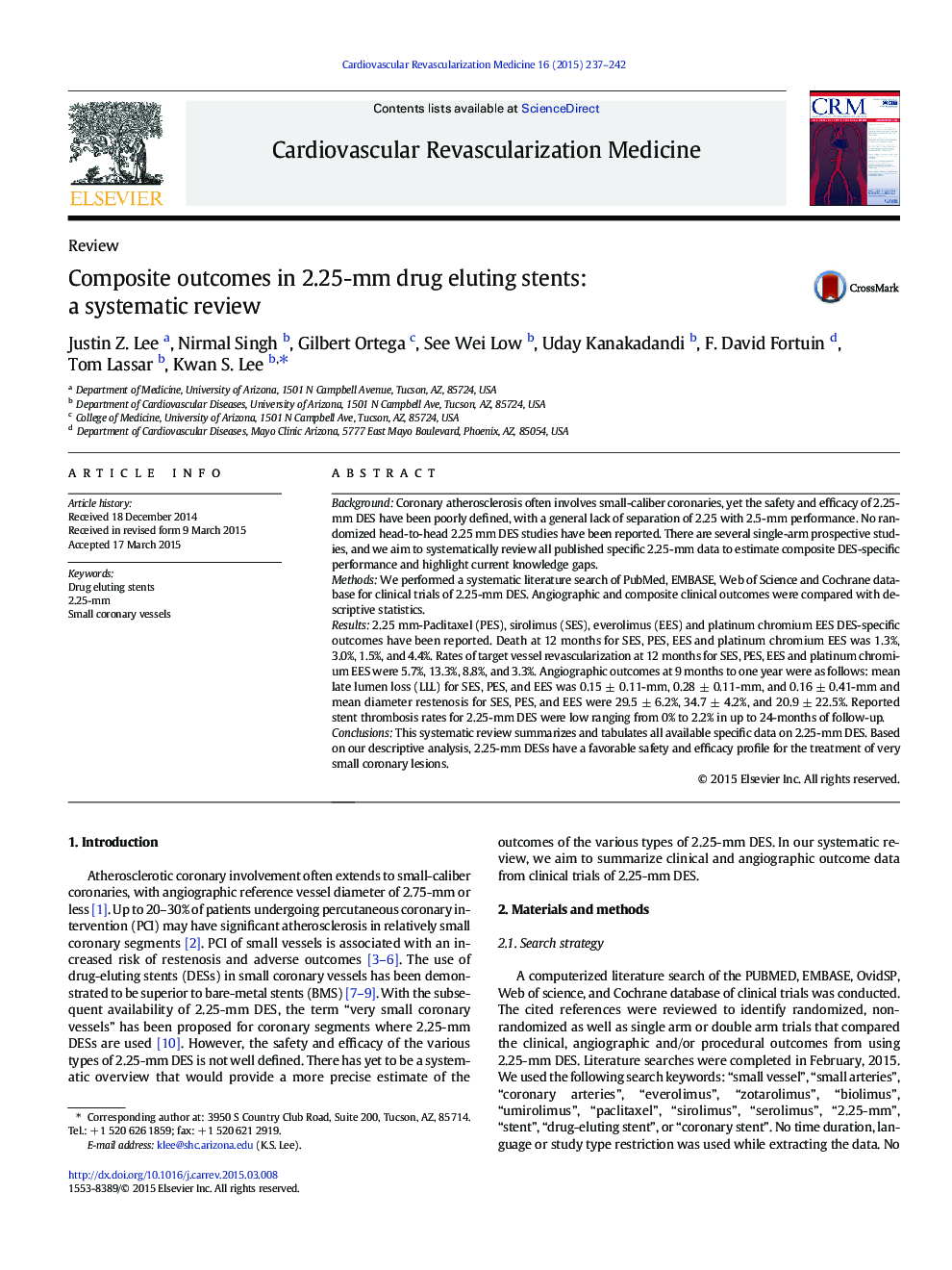| کد مقاله | کد نشریه | سال انتشار | مقاله انگلیسی | نسخه تمام متن |
|---|---|---|---|---|
| 5921153 | 1164869 | 2015 | 6 صفحه PDF | دانلود رایگان |
- Safety and efficacy of 2.25-mm DES have been poorly defined.
- We performed a systematic review on all published 2.25Â mm data to estimate composite DES-specific performance and highlight current knowledge gaps.
- We pooled data from 9 clinical studies and 1,476 patients.
- Composite clinical and angiographic data at less than 12Â months, 24Â months and 60Â months were displayed.
- Based on our descriptive analysis, 2.25-mm DESs have a favorable safety and efficacy profile for the treatment of very small coronary lesions.
- Paucity of outcome data on contemporary 2.25-mm DES was highlighted.
BackgroundCoronary atherosclerosis often involves small-caliber coronaries, yet the safety and efficacy of 2.25-mm DES have been poorly defined, with a general lack of separation of 2.25 with 2.5-mm performance. No randomized head-to-head 2.25 mm DES studies have been reported. There are several single-arm prospective studies, and we aim to systematically review all published specific 2.25-mm data to estimate composite DES-specific performance and highlight current knowledge gaps.MethodsWe performed a systematic literature search of PubMed, EMBASE, Web of Science and Cochrane database for clinical trials of 2.25-mm DES. Angiographic and composite clinical outcomes were compared with descriptive statistics.Results2.25 mm-Paclitaxel (PES), sirolimus (SES), everolimus (EES) and platinum chromium EES DES-specific outcomes have been reported. Death at 12 months for SES, PES, EES and platinum chromium EES was 1.3%, 3.0%, 1.5%, and 4.4%. Rates of target vessel revascularization at 12 months for SES, PES, EES and platinum chromium EES were 5.7%, 13.3%, 8.8%, and 3.3%. Angiographic outcomes at 9 months to one year were as follows: mean late lumen loss (LLL) for SES, PES, and EES was 0.15 ± 0.11-mm, 0.28 ± 0.11-mm, and 0.16 ± 0.41-mm and mean diameter restenosis for SES, PES, and EES were 29.5 ± 6.2%, 34.7 ± 4.2%, and 20.9 ± 22.5%. Reported stent thrombosis rates for 2.25-mm DES were low ranging from 0% to 2.2% in up to 24-months of follow-up.ConclusionsThis systematic review summarizes and tabulates all available specific data on 2.25-mm DES. Based on our descriptive analysis, 2.25-mm DESs have a favorable safety and efficacy profile for the treatment of very small coronary lesions.
Journal: Cardiovascular Revascularization Medicine - Volume 16, Issue 4, June 2015, Pages 237-242
